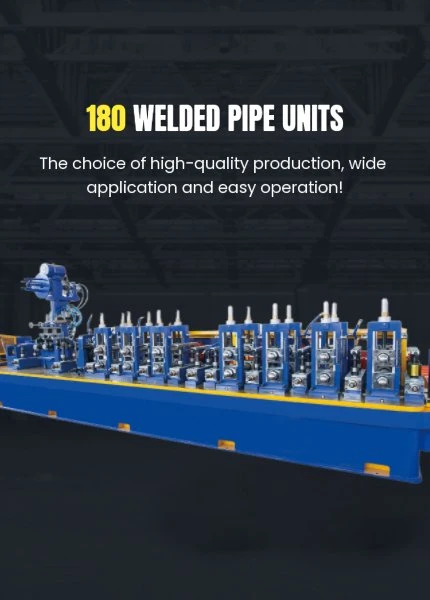flying cut off saw
The Advantages of Flying Cut Off Saws in Modern Manufacturing
In the ever-evolving landscape of manufacturing technology, efficiency and precision are paramount. One of the integral tools that have emerged to meet these demands is the flying cut off saw. This high-performance equipment has revolutionized the cutting processes in various industries, including automotive, aerospace, and metalworking, by delivering enhanced productivity and superior quality.
First and foremost, flying cut off saws are designed for high-speed operations. Unlike traditional saws that operate at lower speeds and require significant downtime between cuts, flying cut off saws are capable of achieving remarkable cutting speeds while the material is in motion. This capability is particularly beneficial for applications involving long lengths of material, such as pipes or bars, where continuous cutting is essential. By synchronizing the cutting action with the movement of the material, these saws minimize handling time and maximize throughput, ultimately leading to improved production efficiency.
Another significant advantage of flying cut off saws is their ability to produce precise cuts with exceptional accuracy. Equipped with advanced computer numerical control (CNC) systems, these saws allow for intricate programming and automation. This leads to consistent cut lengths and high-quality finishes, reducing the need for additional post-processing operations. Precision is critical in industries such as aerospace, where even minor deviations can lead to costly failures. The reliability of flying cut off saws ensures that manufacturers can maintain tight tolerances, fulfilling the stringent quality standards required in these sectors.
flying cut off saw

Moreover, flying cut off saws contribute to waste reduction, a critical aspect of modern manufacturing practices. The efficient cutting performance minimizes scrap material as a result of cleaner, more accurate cuts. In an age where sustainability is at the forefront of industrial priorities, reducing waste not only lowers material costs but also enhances a company's environmental profile. Manufacturers are increasingly pressured to adopt practices that are not only economically viable but also environmentally responsible. The use of flying cut off saws aligns with these goals by contributing to a more sustainable manufacturing process.
Additionally, the versatility of flying cut off saws adds to their appeal in diverse manufacturing environments. They can be equipped with various blades suited for different materials, including metals, plastics, and composites. This adaptability allows manufacturers to tackle a range of cutting challenges without needing multiple types of saws, streamlining operations and saving costs. Furthermore, many flying cut off saws offer adjustable cutting angles and speeds, making them suitable for both heavy-duty applications and delicate operations.
The technology behind flying cut off saws is continuously advancing, with innovations such as improved blade materials and enhanced cooling systems. These advancements not only increase the longevity of the saw blades but also enhance cutting performance. The ability to maintain optimal temperatures during cutting reduces the risk of thermal deformation and extends the lifespan of both the saw and the workpiece. This technical evolution speaks to the commitment of manufacturers to provide solutions that meet the dynamic needs of modern industries.
In conclusion, the flying cut off saw represents a significant leap forward in manufacturing technology. Its capability for high-speed cutting, precision performance, waste reduction, versatility, and continuous innovation make it an indispensable tool in today’s industrial landscape. As manufacturers seek to enhance efficiency and quality, flying cut off saws will undoubtedly play a critical role in driving productivity and maintaining competitive advantages across various sectors. As industries continue to evolve, embracing such cutting-edge technologies will be essential for achieving operational excellence and fostering sustainable practices.
-
High Frequency Straight Seam Welded Pipe Production Line-BzZhou Xinghua Machinery Equipment Manufacturing Co., LTD.|Precision Welding, High EfficiencyNewsJul.30,2025
-
High Frequency Straight Seam Welded Pipe Production Line|BzZhou Xinghua|Precision Welding&EfficiencyNewsJul.30,2025
-
High Frequency Straight Seam Welded Pipe Production Line - BzZhou Xinghua|Precision Engineering&EfficiencyNewsJul.30,2025
-
High-Frequency Straight Seam Welded Pipe Production Line-BzZhou Xinghua Machinery Equipment Manufacturing Co., LTD.NewsJul.30,2025
-
High-Frequency Straight Seam Welded Pipe Production Line-BzZhou Xinghua Machinery Equipment Manufacturing Co., LTD.|Precision Manufacturing, High EfficiencyNewsJul.30,2025
-
High Frequency Straight Seam Welded Pipe Production Line-BzZhou Xinghua Machinery Equipment Manufacturing Co., LTD.|Precision Steel Pipe Manufacturing&Industrial EfficiencyNewsJul.29,2025


